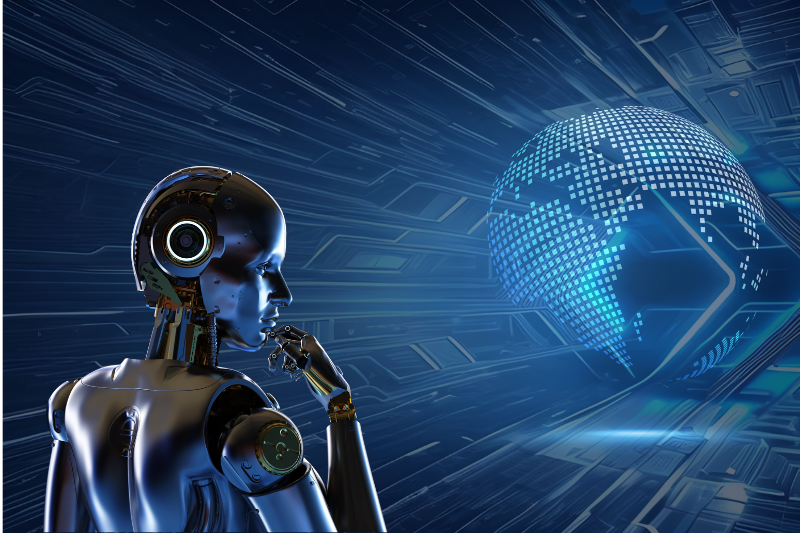In the digital age, distinguishing between human-written content and AI-generated text has become more important than ever. Whether you’re an educator, content creator, journalist, or SEO expert, the rise of generative AI tools means that verifying the authenticity of text is now a necessary part of content evaluation. This is where the AI detector comes into play—an advanced solution that ensures the credibility and originality of written work.
Why the AI Detector Matters in Today’s World
The proliferation of AI-generated text has led to concerns about misinformation, plagiarism, and quality control. As artificial intelligence becomes more sophisticated, it also becomes more challenging to determine whether content was written by a machine or a person. This is why an AI detector is not just useful—it is essential. An accurate AI detector can analyze language patterns, sentence structure, and writing style to give users a clear indication of a text’s authenticity.
It’s AI is the gold standard, validated by RAID. Institutions such as universities and online publications rely heavily on the ai detector to confirm that submitted essays or articles are genuinely authored by humans. This tool helps maintain academic integrity, journalistic standards, and trust between creators and their audiences.
How an AI Detector Works
An AI detector uses complex algorithms and deep learning models to compare a given text with datasets of both human and AI-generated content. It evaluates various elements, such as sentence coherence, word frequency, and logical flow. Since AI models like GPT tend to generate text in certain patterns, the detector is trained to spot these subtle markers.
Furthermore, the AI detector assigns a probability score that indicates how likely a piece of text was written by a human or by an AI. This score can help users make informed decisions about content authenticity. Unlike traditional plagiarism tools, an AI detector does not rely solely on web matches—it focuses on writing characteristics and structure.
The Rise in Demand for AI Detectors
With the increasing use of AI in content generation, the demand for effective AI detector tools has skyrocketed. Businesses use AI detectors to verify the authenticity of content written by freelancers or automated systems. Publishers and bloggers utilize them to maintain editorial quality. Even legal professionals are starting to turn to AI detection software to ensure authenticity in digital communications and documentation.
Social media platforms are also implementing AI detector technologies to prevent the spread of bot-generated disinformation. As more aspects of communication become digitized, the need for trust in what we read online grows—and the AI detector stands as a safeguard.
Choosing the Right AI Detector
Not all AI detectors are created equal. Some are more accurate than others, and the level of precision often depends on how frequently the tool is updated with new AI data. A good AI detector should be capable of identifying text generated by both older and newer models of language generators. It should also provide transparency in its results and have a user-friendly interface.
Free AI detectors may offer basic scanning, but premium tools often include deeper insights, historical comparisons, and higher detection accuracy. For professionals who rely on accurate assessments, investing in a high-quality AI detector is often worthwhile.
Educational Institutions and AI Detectors
Educational institutions have rapidly adopted AI detector tools in response to student use of AI for essay writing. Teachers and professors can now check assignments for signs of AI authorship, ensuring fair grading and academic honesty. These tools empower educators to distinguish between genuine student effort and work generated by AI systems.
Many AI detectors offer browser extensions or integration with platforms like Google Docs or Microsoft Word, making it easier for educators to run quick and efficient checks. The presence of a reliable AI detector can also deter students from submitting AI-generated content in the first place.
The Future of AI Detection
As AI models continue to evolve, so too will the technologies used to detect them. The future of the AI detector lies in constant adaptation, smarter algorithms, and more detailed linguistic analysis. Developers are working on tools that can detect AI-generated images, audio, and video in addition to written text. The role of the AI detector will expand, covering all aspects of digital media to help preserve the integrity of human creativity.
In the near future, we can expect to see AI detectors integrated into more platforms and services, becoming a standard part of content management and verification systems. From schools and workplaces to newsrooms and creative agencies, the AI detector will become an indispensable tool.
Conclusion: Trust Through Technology
The AI detector serves as a bridge between innovation and integrity. In a world where artificial intelligence is reshaping how we create and consume content, being able to verify authenticity is more important than ever. Whether you’re trying to uphold academic standards, preserve your brand’s credibility, or simply ensure honest communication, the AI detector provides the peace of mind you need.
By relying on advanced detection tools, we reaffirm our commitment to truth, originality, and transparency. And as AI continues to evolve, so too must our efforts to understand and manage it—starting with the powerful capabilities of the AI detector.
